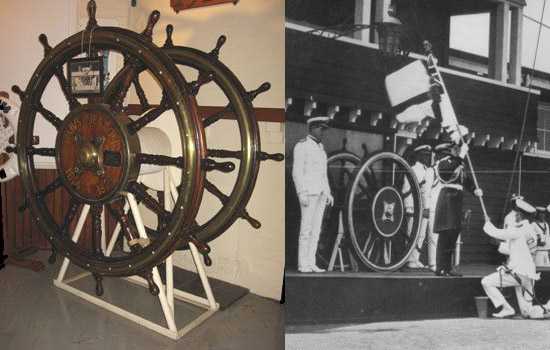| ||||||||
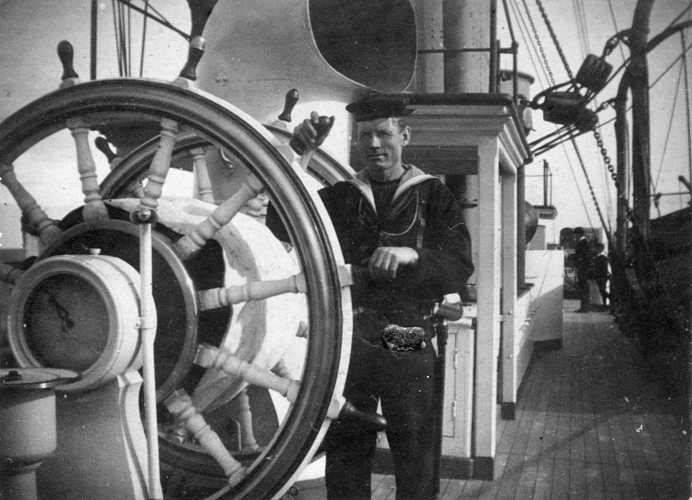
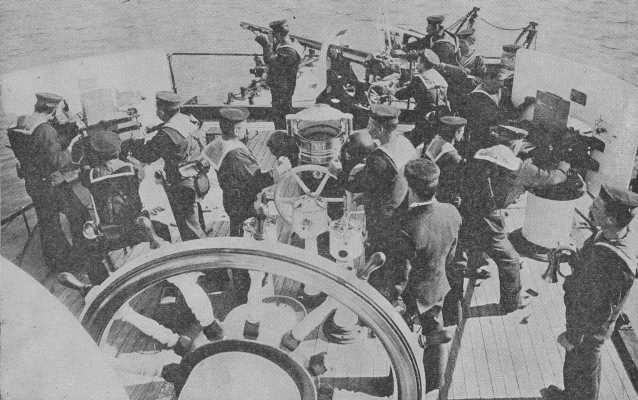
|
It appears that the vessel is literally swarming with rats, & to such an extent are these pests destructive, that shortly after leaving Geelong it was discovered that the wheel ropes, which are made of green hide, & measure 6 inches in circumference, had been gnawed so nearly through that they parted, & new ones had to be rove; they were quite new, the old ones only having been replaced on the day previous. It may be suggested that the only way to get rid of the vermine will be to clear everything out of the ship & starve them out, as there are too many compartments to admit of her being fumigated.
As the Cerberus and the Nelson steamed down the Bay abreast, they formed a highly interesting spectacle. The Nelson, majestic in size and proportion, brilliant in paint, and exhibiting outside the perfection of nautical neatness, was a type of the man of war which achieved most of the British naval triumphs. In comparison, the stunted and apparently ill regulated proportions of the Cerberus made her appear one of the ugliest vessels afloat; but she was unquestionably the embodiment of the latest ideas respecting naval defences, and the critics on board her pleased themselves reckoning up the simple means by which in five minutes she could lay the line of battleship low.
However that may be, the occasion was seized to try the steaming powers of both vessels to the utmost. It was said that the Nelson had not a good head of steam, but certainly the Cerberus had, and with apparent ease, and despite bad coal and a foul bottom, she made 10 knots an hour, or about half a knot faster than the Nelson. Captain Panter then signalled orders under which the two vessels were made to go through such simple manœuvres as falling astern, changing course, and so on.
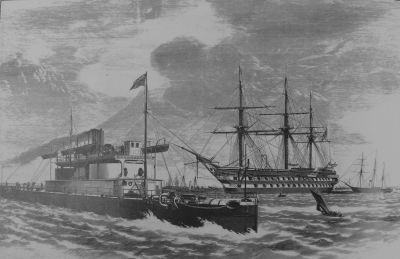
.............So soon as lunch was over she was made to exhibit her steering powers. These are so extraordinarily great, that she was not only made to turn round within her own length, but to steam close round the Nelson, almost describing a parralelogram as she did so, the angles shown by her wake were so well defined. While the Nelson was under weigh, the Cerberus was also made to move so as to have her guns bearing upon the larger vessel, which, in her turn, could only bring two guns to bear upon her adversary.
Attached to the wheel is a screw working a series of shafts & pinnions down to the lower deck (sic) mid-ships, where it connects with & so works the reversing eccentrics of a double-cylinder engine of 12 horse power. These work on a large piston contained in an oil cylinder, from which are carried inch pipes leading aft on either side of the ship. On each side of the tiller is another cylinder in which works a ram.
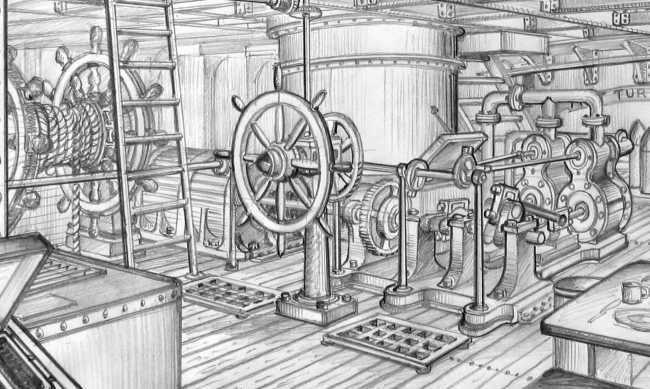
As the wheel is put to port the screw in the central cylinder is forced over to the starboard side, sending the oil before it, & acting upon the ram on the starboard side of the tiller, the helm is pushed to port, & at the same time the oil returns by the pipe on the port side according to the central cylinder. By reversing, the wheel on deck the opposite effect is produced according to the number of revolutions given to the wheel so is the tiller moved to port or starboard. The machinery is most ingenious, & Mr. Wilson spent a pretty good deal of time improving his design so as to render it perfect. The working drawings have been prepared, tenders called for, & ultimately that of Mr. T. Tozer was accepted, the price being about £1,600.
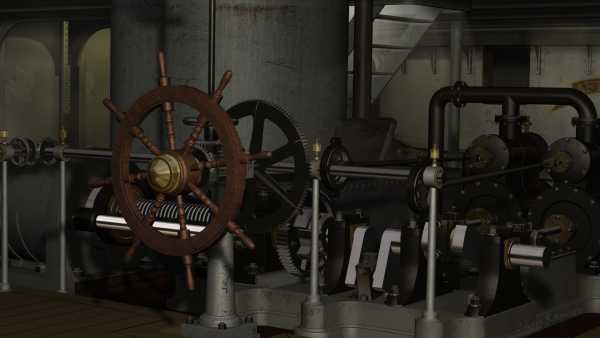
A final trial of the new steam-steering apparatus of the turret ship Cerberus, before accepting the work from the contractor, was made yesterday, and the results of the tests were of a thoroughly satisfactory character. On the previous trial the tubes containing the oil or liquid necessary for acting on the steering gear were only temporary, but they have now been replaced by new tubing from England. Several minor alterations were also found necessary, and these having been accomplished, everything is now complete and effective, and the huge and heavy craft has not only been rendered much handier for manoeuvring, but is also far more easily managed, and the steering, which under the old style of things, was both laboursome and unstead (sic), is now, so to speak, mere child's play.
The Cerberus, in command of Captain T. C. Mandeville, and with Lieutenants Tandy and Heathcote on board, got under weigh yesterday morning, and left her moorings at 7 o'clock, in company with H.M.S.S. Sapphire. The Cerberus escorted the Sapphire some 15 miles down the bay, and previous to parting company the band played "Auld Lang Syne". After wishing a pleasant voyage to the Sapphire, the Cerberus dropped sentiment and proceeded to business, and was put through a number of evolutions, while a boat in charge of Lieutenant Heathcote was sent off to measure angles for calculating various distances, such as determining the diameter of the circle in which the vessel would turn, with both engines going ahead at full speed. &c.
The trials, both as to speed and steering, were to the satisfaction of Captain Mandeville, and also of Mr. A. Wilson, engineer-surveyor to the Steam Navigation Board, who was present on behalf of the Government, to examine the work previous to its passing out of the hands of the contractor.
The Cerberus returned to the bay in the course of the afternoon, picking up her mooring about 2 o'clock.
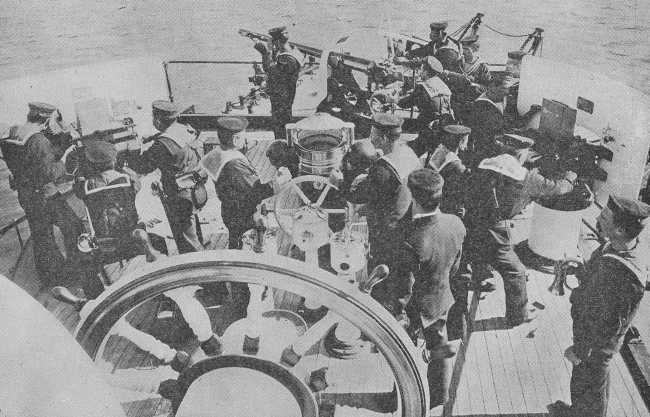
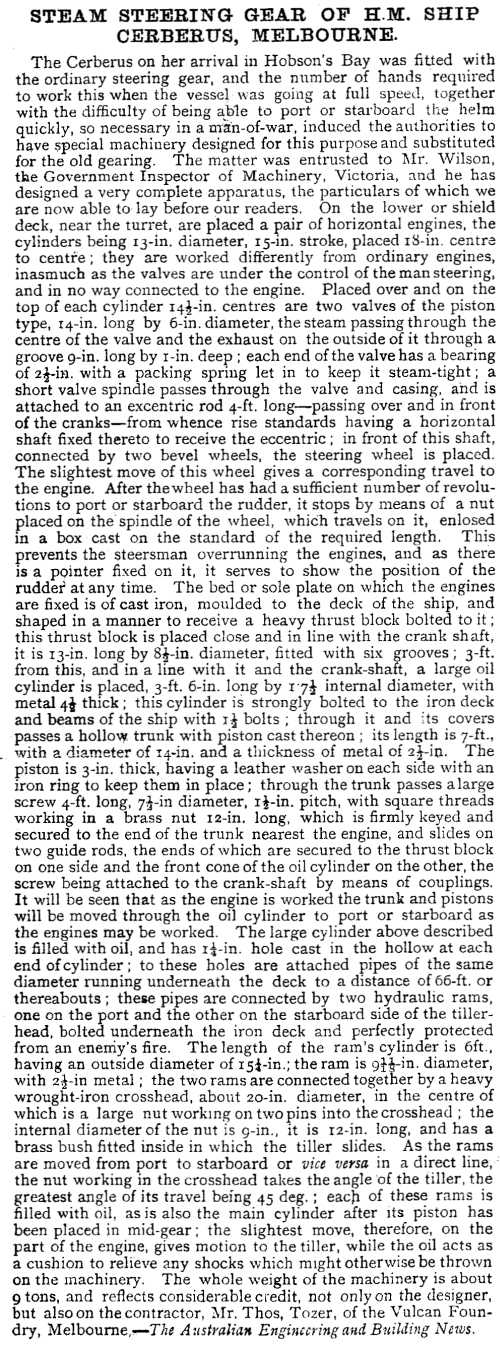
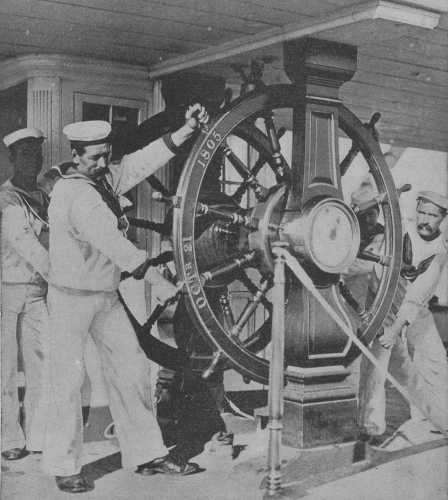
Look for in the photo:-
